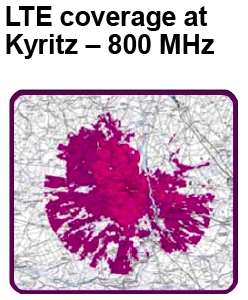PMC-Sierra has signed a definitive agreement to acquire Wintegra Inc, a provider of network processors optimised for mobile backhaul equipment.
Mobile networks worldwide are reaching a breaking point driven by the explosive growth in video and data traffic fuelled by the rapid adoption of 3G and 4G smartphones, tablets and netbooks. Carriers are entering into multi-year upgrades of their mobile backhaul equipment as they transition from TDM to packet-based architecture. Packet-based mobile backhaul enables carriers to cost effectively scale bandwidth capacity to accommodate the increasing levels of media streaming that drives the projected 10 times growth in mobile data traffic over the next three to four years.
Wintegra’s WinPath™ family of network processors – combined with their field-proven networking software – is used in 3G/4G base stations, fibre and microwave cell-site routers, as well as radio network controllers deployed globally in mobile networks. These single-chip solutions enable carriers to increase throughput on their mobile backhaul networks while successfully scaling and migrating to packet-based architectures.
The acquisition accelerates PMC-Sierra’s product offering in the IP/Ethernet packet-based mobile backhaul equipment market segment, which is expected to grow 35 percent annually from $1.2 billion in 2009 to $5.5 billion in 2014, according to Infonetics research1.
This acquisition fits strategically with PMC-Sierra’s overall efforts to accelerate the transition of existing communications equipment to converged, packet-centric solutions. Today, PMC-Sierra is the leading provider of residential access with Passive Optical Networking (PON) solutions as well as end-to-end multi-service Optical Transport Network (OTN) solutions for Metro networks. Wintegra extends PMC-Sierra’s offerings into IP-based mobile backhaul solutions required by carriers as they upgrade their infrastructure to capture growing 3G/4G wireless data service revenues.
“Carriers are moving rapidly to IP-based mobile backhaul and Wintegra’s product offering is uniquely positioned to enable this packet transition and breakthrough the bandwidth bottlenecks faced in mobile networks,” said Greg Lang, President and Chief Executive Officer of PMC-Sierra. “Combined with our broad portfolio of communications infrastructure products, PMC-Sierra is leading the industry in the migration to IP-based networks in mobile backhaul, metro optical transport, and residential Fiber-To-The-Home.”
“We’ve already been partnering with PMC-Sierra to create mobile backhaul solutions that combine our multi-service WinPath processors and networking software with PMC-Sierra’s extensive portfolio of framers and mappers,” said Kobi Ben-Zvi, Founder and Chief Executive Officer of Wintegra. “Given the strong strategic fit between the two companies, joining forces will allow us to further accelerate the industry’s transition to IP-based networks.”
Wintegra has 165 employees with the majority of its R&D development team located in Ra’anana, Israel and Austin, Texas. The acquisition of Wintegra expands PMC-Sierra’s presence in Israel, where its FTTH business is based. Wintegra’s founders, Kobi Ben-Zvi and Robert O’Dell, will join PMC-Sierra and bring an exceptional team with strong expertise in silicon design, networking software, and system integration.
Under the terms of the deal, PMC-Sierra will pay Wintegra $240 million in cash consideration less an estimated net cash amount of $27 million on Wintegra’s balance sheet at the time of closing, for a net purchase price of $213 million. PMC-Sierra intends to use its existing balance sheet cash to finance the acquisition. Further, up to an additional $60 million of cash consideration may be paid if certain growth and performance milestones are reached by the end of 2011. The acquisition has been approved by both companies’ board of directors and is expected to close in the fourth quarter of 2010 subject to customary closing conditions and regulatory approvals. The transaction is expected to be immediately accretive to PMC-Sierra’s earnings.



